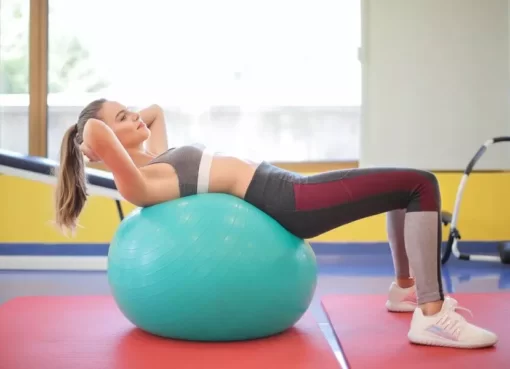Overview
Everyone exercises for a reason, and it is usually because they have something that they want to accomplish as a result of their exercise program. However, if you do not exercise at a level of cardiovascular intensity that matches the goals of your exercise program, you could be spinning your wheels and not accomplishing very much.
When doing cardiovascular training, there are simple ways to keep track of your level of exercise intensity, and you can use these simple measuring techniques in order to make sure that you are on track for success.
First, ask yourself what the goal is of your cardiovascular training program:
- Are you trying to lose weight?
- Do you want to increase your level of cardiovascular endurance?
- Are you training for a specific athletic event?
Weight loss via cardiovascular training
If your primary goal is to lose weight, then it is necessary for you to put forth enough effort in order to accomplish that. In other words, you’re going to have to sweat!
Even something as simple as going for a leisurely stroll is better for you than just sitting on the couch, your body will constantly adapt to your cardiovascular training program, so you are going to have to ensure that the calorie-burning never stagnates as a result of sub-par intensity.
In short, you need to break a sweat from the intensity of the exercise, not the temperature of your training environment. Anyone can walk outside on a hot day and start sweating. That doesn’t necessarily mean that your body is burning through very many calories, however.
In order to ensure that you are actually burning calories, you need to make sure that you are working hard enough to do that. Tracking your heart rate is the single most effective method of doing so. It doesn’t matter if you are in a hot environment or a cold environment, if you keep your heart rate in the target heart rate zone, you will be burning calories.
Increasing your level of cardiovascular endurance
If your goal is to maximize your level of health by having a high level of cardiovascular endurance, then you need to train in many different manners, rather than just sticking to the same exercise modality all the time.
Most people have one or two cardiovascular training activities that they enjoy more than others, so they tend to stick with those activities. However, again, your body will always adapt to any given activity, so you need to change the circumstances if you want to change your level of cardiovascular endurance.
However, you do not necessarily have to perform a different activity, but can instead modify the activity that you enjoy doing in order to change the impact that it has on your body.
Interval training is a simple and effective way to do exactly that, as it does not require you to change the exercise itself, but rather the way in which you do it
Training for a specific athletic event
One of the best ways to stay motivated to achieve a certain fitness or weight loss goal is to take part in an athletic event that requires a dedication to a healthy lifestyle in order to participate.
There are innumerable walking, running, and bicycling challenges that people can take part in, or you could just set your own personal goal to achieve a certain level of success.
In either case, the key to ensuring that your exercise program is intense enough is to measure your progress. This could be measuring an actual distance that is covered in a certain amount of time, or it could be the measurement of the time that it takes to cover a certain distance.
For example, if you were training for a long-distance race, such as a half-marathon (13.2 miles on foot), then the challenge would be to achieve a constant increase in the actual distance you are able to cover in any given exercise session. By incrementally taking up that distance, you can accomplish huge goals that are simply spanned out over a long-term training period.
On the other hand, if you are going to take part in a race that is based on a short distance, such as a 5K foot race, then incrementally taking up your speed over the same exact distance would be an example of a training program that matched your needed intensity.
In both cases, I recommend putting yourself in a position where you can measure very precisely either the speed or the distance that you travel during each exercise session.
To use running as an example, if you are going for distance, map out routes that run the gamut from your present ability all the way up through your goal distance, and try to attain a slightly farther distance each week.
For a speed race, a treadmill is a great training tool since you can measure very precisely how fast you are running. If you train for 1 week while running at 5 mph, the next week take it up to 5.2 mph. Not a huge increase, just enough to marginally push yourself past your previous limits.
In all cases, though, you should spend at least some of your training time in the actual environment in which you will be competing. Training exclusively indoors has the benefit of the computerized tracking of your progress on a treadmill or an exercise bike, but it does not prepare you for environmental factors such as heat, humidity, or rain.
Conclusion
The amount of cardiovascular activity you should do each week is determined by your fitness objectives and current fitness level.
Someone who is just starting out should aim to go for a stroll every day. Take a day off if your legs feel heavy or weary after a few days of walking.
If you’ve overdone it, your body will let you know. At first, the aim is to gradually increase your work capacity (how long your leg and your cardiovascular system can sustain the activity).
After you’ve established a solid foundation, you should choose a goal for your cardiovascular program. The most common objective is to employ cardiovascular training to help people lose weight.
If correct progressions are followed, fit persons can undertake cardiovascular exercise up to six days a week. During the week, you should have 1-2 high-intensity days to challenge yourself.
The rest of the week may be spent doing steady-state activities, such as running outside or participating in group fitness courses.
Allow your body to inform you if you require more recuperation days based on how your legs feel and your energy level throughout the exercises.
You should feel fresh for the high-intensity days if you exercise at the appropriate intensities throughout the week.
FAQs
How many days a week should you do cardiovascular?
The US Department of Health and Human Services recommends that all people, including the elderly and disabled, engage in at least 150 minutes of moderate-intensity physical exercise each week—roughly 30 minutes, five days a week.
How do I know if my heart is healthy enough for exercise?
Another indication of a healthy heart is the capacity to swiftly return to your normal heart rate after intense activity. You may put yourself to the test by measuring your heart rate immediately after exercising and then again after one minute of rest. Your heart rate should have decreased by at least 20 beats.
How much exercise is enough per day?
To keep it simple, aim for at least 30 minutes of moderate physical exercise every day as a general objective. You may need to exercise more if you want to reduce weight, maintain weight loss, or reach certain fitness objectives.
Citation
https://www.mayoclinic.org/healthy-lifestyle/fitness/expert-answers/exercise/faq-20057916
Featured photo: People photo created by diana.grytsku – www.freepik.com





Your article helped me a lot, is there any more related content? Thanks!